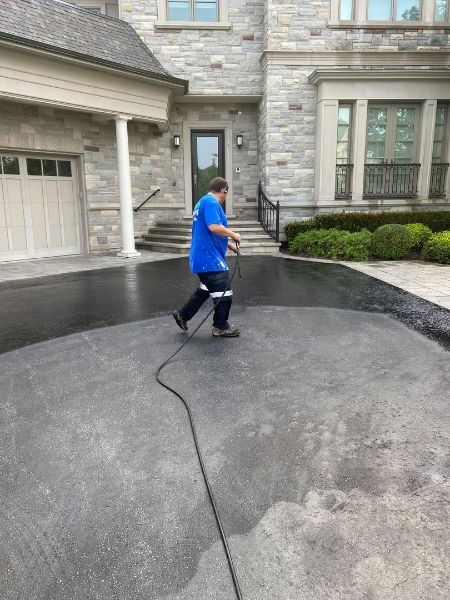Resilient Outcomes: Asphalt Patch Repair Through Precision Sealing
Resilient Outcomes: Asphalt Patch Repair Through Precision Sealing
Blog Article
Cold Mix Asphalt Vs. Hot Mix Asphalt: Which Is Right for You?

Structure Distinctions
Cold mix asphalt is produced by emulsifying the asphalt binder with water and an emulsifying agent prior to mixing it with aggregate. The warm mix asphalt manufacturing process involves heating the accumulation and asphalt binder individually prior to integrating them at the asphalt plant.
Furthermore, chilly mix asphalt has a tendency to be less dense and more adaptable than warm mix asphalt. This versatility makes it much better fit for areas with higher levels of motion, such as driveways or roads with rush hour. In contrast, hot mix asphalt is known for its high longevity and resistance to rutting and fracturing, making it a recommended selection for freeways and high-traffic roadways where long life is critical.
Installment Process Variations
The process of installing cold mix and hot mix asphalt displays remarkable variances in their treatments and needs. In contrast, hot mix asphalt demands a much more fancy installment procedure. Due to the heating needs, hot mix asphalt installments are generally brought out by specialists with specialized tools, ensuring a much more structurally sound and permanent result.
Sturdiness and Long Life Elements
When thinking about asphalt choices, toughness and durability are vital aspects to assess for long-term sidewalk efficiency. Hot mix asphalt (HMA) is understood for its phenomenal toughness and long life.
In regards to durability, HMA typically outperforms CMA as a result of its remarkable strength and resistance residential properties. HMA sidewalks have a longer life span, needing much less constant repair services and maintenance, which can translate to cost savings over time. Additionally, HMA pavements are much more conveniently adjustable to fulfill specific job requirements, even more improving their resilience.
Expense Considerations
Taking into consideration the monetary effects is an important aspect when evaluating the option in between hot mix asphalt (HMA) and cold mix asphalt (CMA) for pavement projects. While the preliminary cost of warm mix asphalt is generally higher than that of cold mix asphalt, HMA often gives a more economical solution in the lengthy run due to its superior toughness and durability.
In addition to material costs, it's important to consider the expenses related to installment and upkeep when comparing HMA and CMA. HMA normally needs specific devices and look what i found knowledgeable labor for appropriate installation, which can impact total project costs. On the other hand, CMA is much easier to work with and can often be applied utilizing simpler strategies, possibly lowering installation costs. Eventually, the decision in between HMA and CMA need to take into consideration not just the preliminary price however also the long-lasting economic ramifications to identify the most economical alternative for the particular sidewalk task.
Environmental Effect Comparison
Contrast of the ecological effects in between hot mix asphalt (HMA) and chilly mix asphalt (CMA) reveals distinct differences in sustainability techniques. HMA production needs high temperature Going Here levels, leading to enhanced power usage and greenhouse gas emissions.
Moreover, the use of CMA typically involves recycling existing asphalt sidewalk, promoting resource preservation and lowering the amount of waste sent out to landfills. By deciding for CMA over HMA, road building and construction jobs can contribute positively to ecological conservation efforts.
Conclusion
In conclusion, the choice between chilly mix asphalt (CMA) and hot mix asphalt (HMA) relies on numerous variables such as structure, installation procedure, longevity, longevity, expense, and environmental effect. asphalt patch repair. While CMA uses a cost-efficient and why not try here quick solution for minor repair services, HMA makes certain remarkable durability and long life for rush hour areas. Consider these elements meticulously to establish which sort of asphalt is the ideal option for your paving needs

Taking into consideration the economic implications is a critical facet when examining the option in between hot mix asphalt (HMA) and cold mix asphalt (CMA) for pavement jobs. While the first price of hot mix asphalt is usually greater than that of cold mix asphalt, HMA typically offers a more affordable option in the long run due to its premium durability and longevity. cold mix asphalt.Contrast of the ecological effects in between warm mix asphalt (HMA) and cool mix asphalt (CMA) discloses distinct differences in sustainability methods.In final thought, the selection between cool mix asphalt (CMA) and warm mix asphalt (HMA) depends on numerous factors such as structure, installation procedure, longevity, long life, expense, and environmental effect
Report this page